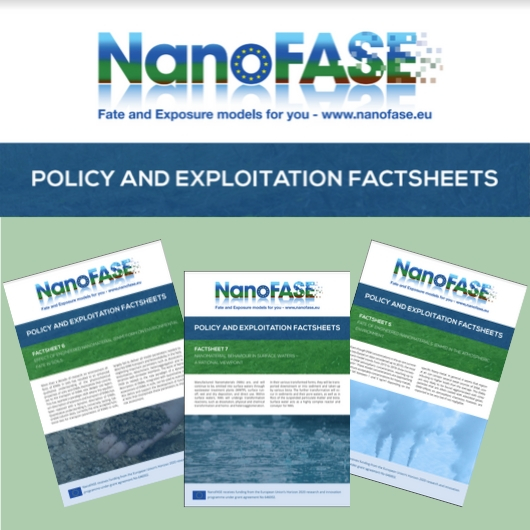Eight factsheets summarise NanoFASE’s major results & advances
The NanoFASE project produced 8 factsheets to highlight its major outcomes and innovations. These factsheets are designed to describe results in a synthesized and inclusive way targeting regulatory bodies, policymakers, stakeholders, researchers and other interested parties.

Take a look at the "NanoFASE Policy and Exploitation Factsheets" to explore the advancements, developed by the project in the past four years.
Factsheet 1 presents the nanomaterial exposure assessment framework that meets the needs of regulatory bodies, policymakers, stakeholders and other researchers
Factsheet 2 highlights modelling as a central component for assessing environmental exposure to potentially toxic chemicals and predicting fluxes of such chemicals within and between environmental compartments.
Factsheet 3 examines how mathematical-statistical methods when combined with realistic empirical data can help to predict engineering nanomaterial (ENM) emissions into the environment
Factsheet 4 supports the development of standardised test protocols and guidelines that can contribute to cost-efficient exposure assessments and which could be implemented as part of a future risk assessment framework.
Factsheet 5 explains that NanoFASE approaches can be used in long-range modelling to predict the dispersion of engineered nanomaterials in the atmospheric environment.
Factsheet 6 addresses the effect of engineered nanomaterials (ENM) on the environmental fate of soils.
Factsheet 7 examines the nanomaterial behaviour in surface waters, emitted through wastewater treatment plants, surface runoff, wet and dry deposition, and direct use.
Factsheet 8 recommends that future hazard testing of nanomaterials should focus on the aged nanomaterials as the potential for accumulation and hazards also evolves over time.
